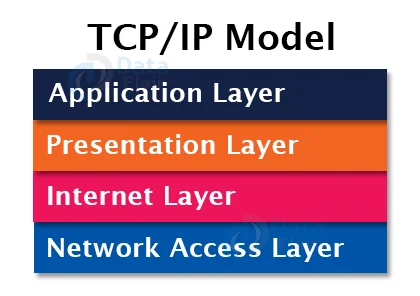OSI vs TCP/IP Model
FREE Online Courses: Click for Success, Learn for Free - Start Now!
What is the OSI Model?
The OSI acronym stands for Open System Interconnection, and it was created in the 1980s. It is a conceptual network communication model. It has never been fully implemented, yet it is still referred to today.
This OSI model is made up of seven layers, each of which is linked to the next. As data goes down the OSI model, each layer provides more information. The data descends until it reaches the OSI model’s last layer.
When data is received at the OSI model’s last layer, it is transferred via the network. When the data is received on the opposite side, the procedure is reversed.
What is the TCP/IP Model?
TCP is an abbreviation for Transmission Control Protocol, whereas IP is an abbreviation for Internet Protocol. The TCP/IP model applies to a variety of protocols that make up the internet. Nowadays, we seldom hear the name of the TCP/IP model; instead, we hear the names of IPv4 or IPv6, although it is still valid. This model has four layers.
Similarities between OSI and TCP/IP Model:
1. Common Architecture:
Both models are logical models with comparable structures due to the use of layers in their construction.
2. Pre-defined Standards:
The pre-defined standards and protocols; these models do not redefine them; they just reference or utilise them. For example, before the construction of these models, the IEEE specified Ethernet standards; instead of rebuilding them, models utilised these predefined standards.
3. Simple troubleshooting:
By splitting the complicated function down into simpler components, both models have simplified the debugging process.
4. Similar functionality of layers:
Technology is evolving rapidly!
Stay updated with DataFlair on WhatsApp!!
The functions performed between the ‘presentation’ and ‘network’ layers are analogous to the functions done at the transport layer.
Difference between OSI and TCP/IP (OSI vs TCP/IP):
OSI Model | TCP/IP Model |
| It is an acronym that stands for Open System Interconnection. | It is short for Transmission Control Protocol. |
| The OSI model was created by ISO (International Standard Organization). | It was created by ARPANET (Advanced Research Project Agency Network). |
| This is a stand-alone standard and generic protocol that serves as a communication bridge between the network and the end user. | It is made up of common protocols that lead to the creation of an internet. It is a communication protocol that allows hosts to communicate with one another. |
| The transport layer offers a guarantee for packet delivery in the OSI model. | The transport layer does not assure the delivery of packets. However, we can state that it is a reliable model. |
| This model takes a vertical approach. | This paradigm employs a horizontal approach. |
| The session and presentation layers are separated in this approach, i.e., they are distinct. | The session and presentation layers are not distinct in this approach. The application layer incorporates both layers. |
| It is often referred to as a reference model for the construction of diverse networks. The TCP/IP model, for example, is based on the OSI model. | It is a model of an OSI model that has been implemented. |
| The network layer in this model enables both connection-oriented and connectionless functionality. | The network layer solely offers connectionless services. |
| Protocols in the OSI model are hidden and easily replaceable as technology evolves. | Protocols cannot be simply replaced in this model. |
| It has seven layers. | It is made up of four layers. |
| The OSI model describes services, protocols, and interfaces while also distinguishing between them. It is protocol-independent. | Services, protocols, and interfaces are not adequately separated in the TCP/IP model. It is protocol-specific. |
| This model is seldom used. | This model is widely employed. |
| It standardizes equipment such as routers, motherboards, switches, and other hardware components. | This model does not give device standardisation. It establishes a link between several computers. |
Summary:
In this article, we took a brief look at the OSI and TCP/IP models, and the methods in which they function. We also looked at the similarities between these two models. Lastly, we also covered the differences between the OSI and TCP/IP models in a tabular form.
If you are Happy with DataFlair, do not forget to make us happy with your positive feedback on Google



